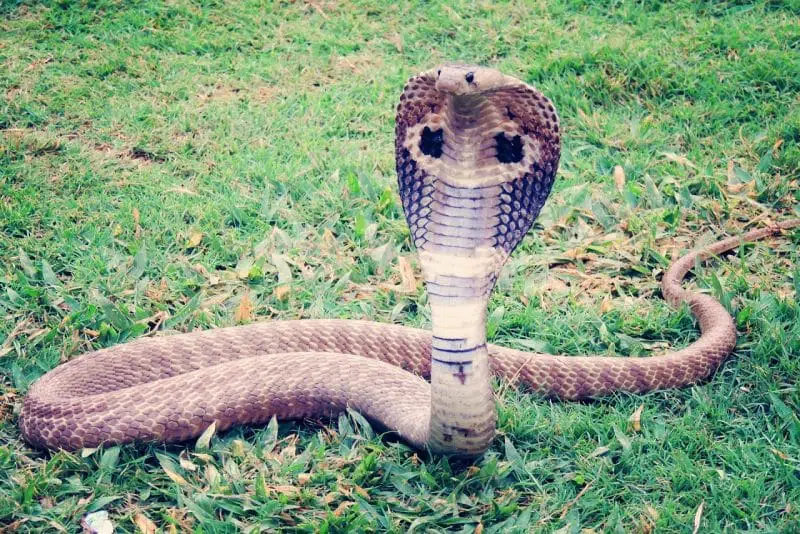Welcome to animals that start with K. There aren’t as many animals starting with the letter K as with the other letters of the alphabet, but they still exist! This list contains common species and some that you might consider new, enjoy exploring our list of animals that start with K!
Read the entire article or jump to any animal with the letter K.
Overview of Animals That Start with K
1. Kangaroos
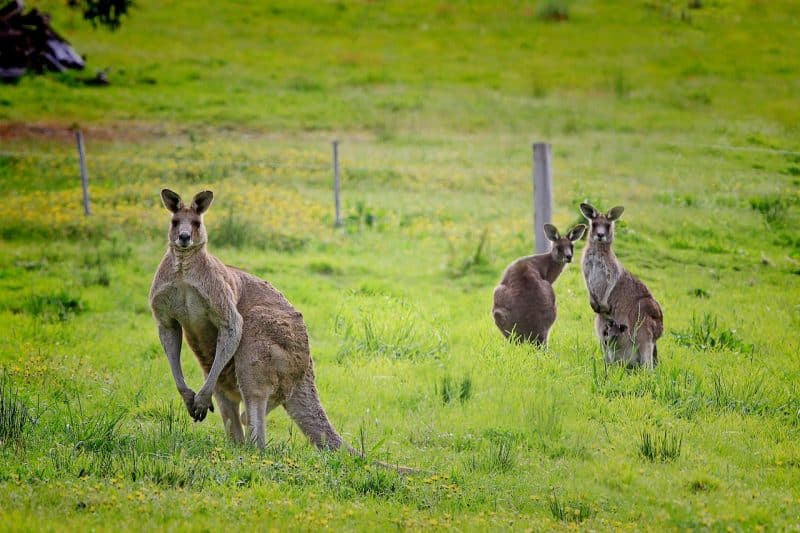
| Scientific Name | Macropus |
| Where It Lives | Oceana |
| What It Eats | Flowers, grass, seeds |
| Conservation Status | Leatst Concern (LC) according to the IUCN Red List |
Fun Fact: Kangaroos can stand on their tails.
Karoos, bipedal animals, are found in Australia, Tasmania, and surrounding islands where they live in woodlands, savannas, and forests.
Their exceptionally long hind legs, enormous tails, and arched backs set them apart from other species in the Macropodidae family. Kangaroos are known for their jumping ability, and can leap up to 30 feet far and 10 feet high!
2. Keel-billed Toucan

| Scientific Name | Ramphastos sulfuratus |
| Where It Lives | Central America |
| What It Eats | Fruit, insects, lizards, eggs |
| Conservation Status | Near Threatened (NT) according to the IUCN Red List |
Fun Fact: This bird is known for its loud calls that sound like frog calls and can be heard up to half a mile away.
The Keel-billed Toucan, also known as the rainbow toucan, inhabits tropical, lowland, and subtropical forests in Central America.
These colorful birds are known for their large and brightly colored beaks, which make up one-third of their size. They love eating fruit, and their bills are well adapted so that they can dissect fruits to throw their heads back and swallow them whole!
3. Key Deer

| Scientific Name | Odocoileus virginianus clavium |
| Where It Lives | Florida |
| What It Eats | Plants, mangroves, berries |
| Conservation Status | Endangered (EN) according to the IUCN Red List |
Fun Fact: Key Deer almost went extinct in the 1950s.
Key deer, also known as toy deer, inhabit pine rocklands, mangroves, hardwood hammocks, and freshwater wetlands in Florida.
These small deer almost went extinct due to excessive hunting, but their population today is stable although they are still an endangered species. Key deer aren’t afraid of humans and can often be found wandering into gardens to eat.
4. Kiko Goat
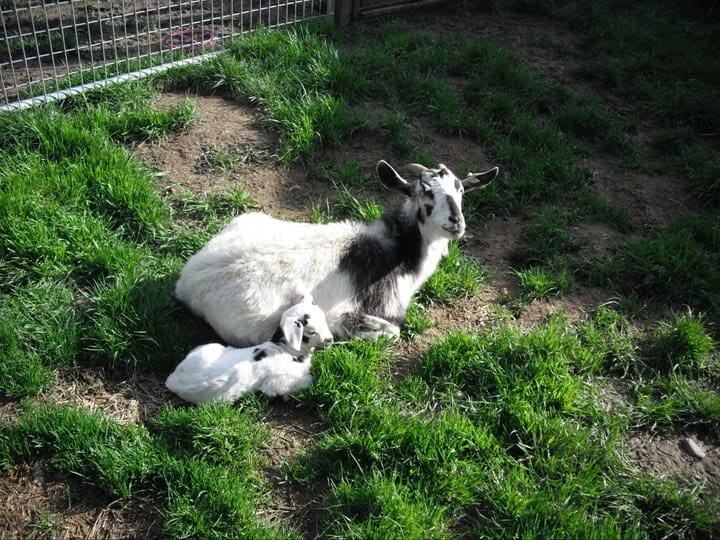
| Scientific Name | Capra aegagrus Hircus |
| Where It Lives | North America, Oceana |
| What It Eats | Plants, grasses |
| Conservation Status | Least Concern (LC) according to the IUCN Red List |
Fun Fact: A pedigreed male Kiko goat can cost $1,500!
Kiko Goats originated in New Zealand where they were bred for meat, but can be found on farms around the world today.
They are a crossbreed between dairy goats and feral goats, and despite their large horns, they are not aggressive. These friendly aren’t afraid of anything, placing the responsibility for their safety in the farmers’ hands who have to ensure they roam in safe enclosures.
5. Killer Whale
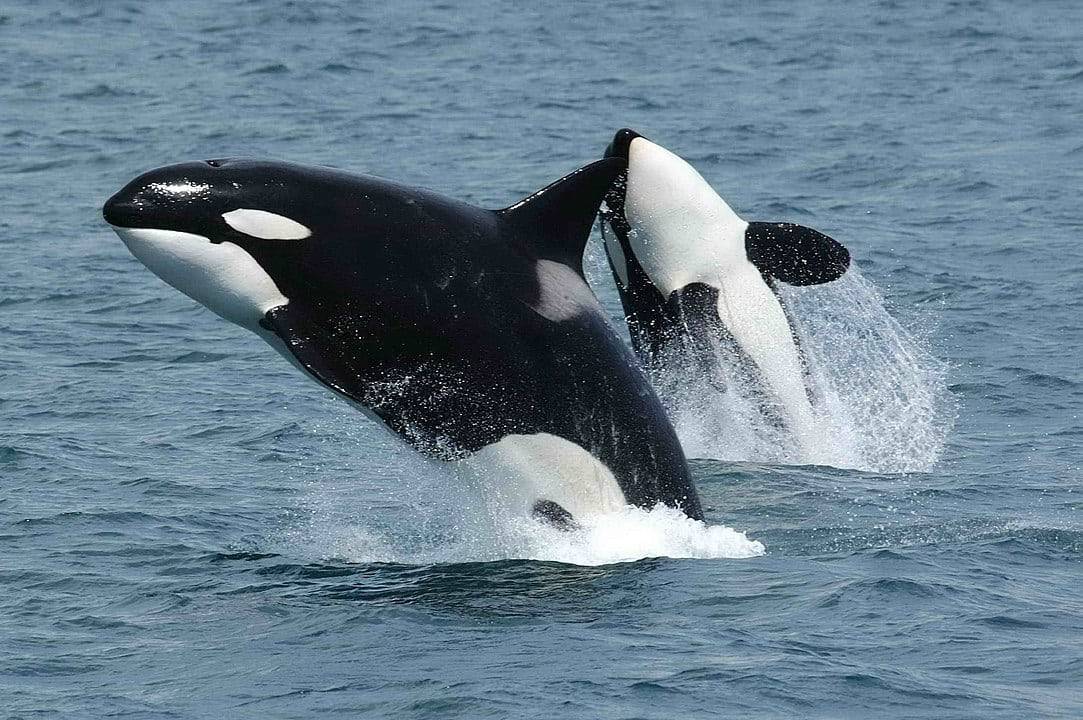
| Scientific Name | Orcinus orca |
| Where It Lives | Worldwide |
| What It Eats | Seals, dolphins, sea lions, other whales, fish, squid, sea birds |
| Conservation Status | Data Deficient (DD) according to the IUCN Red List |
Fun Fact: Female killer whales live longer than their male counterparts.
Killer whales are apex predators that roam oceans around the world.
These black and white whales are extremely intelligent as demonstrated by their sophisticated hunting techniques. These social animals travel and hunt in pods of 3 to 50 whales and are led by a female. Despite their name, Killer whales do not attack humans but are apex predators preying on almost all other marine animals.
6. Kinder Goat
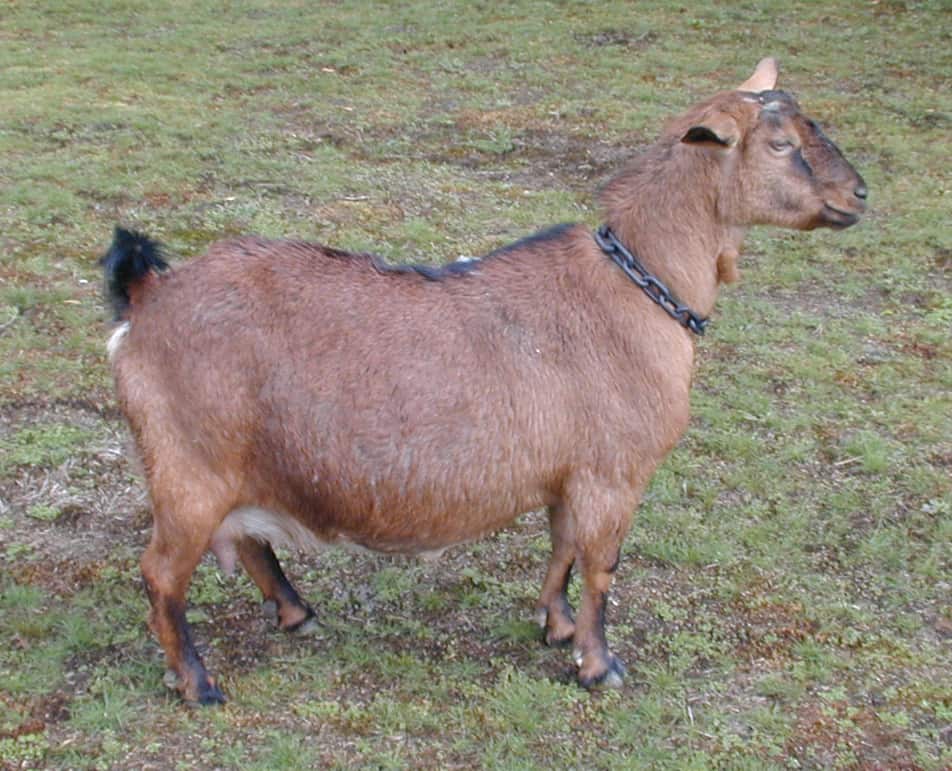
| Scientific Name | Capra aegagrus hircus |
| Where It Lives | North and South America |
| What It Eats | Vegetation |
| Conservation Status | Not Evaluated (NE) according to the IUCN Red List |
Fun Fact: Kinder goats make great pets.
Kinder Goats, a crosbreed between American Pygmys and Nubian Goats, live on farms and homesteads across North and South America.
These goats are friendly, social and easily trained making them wonderful pets! Often farmed with for their milk which is fatty and sweet, and excellent to produce cheese with, as they produce up to half a gallon of milk a day.
7. King Cobra
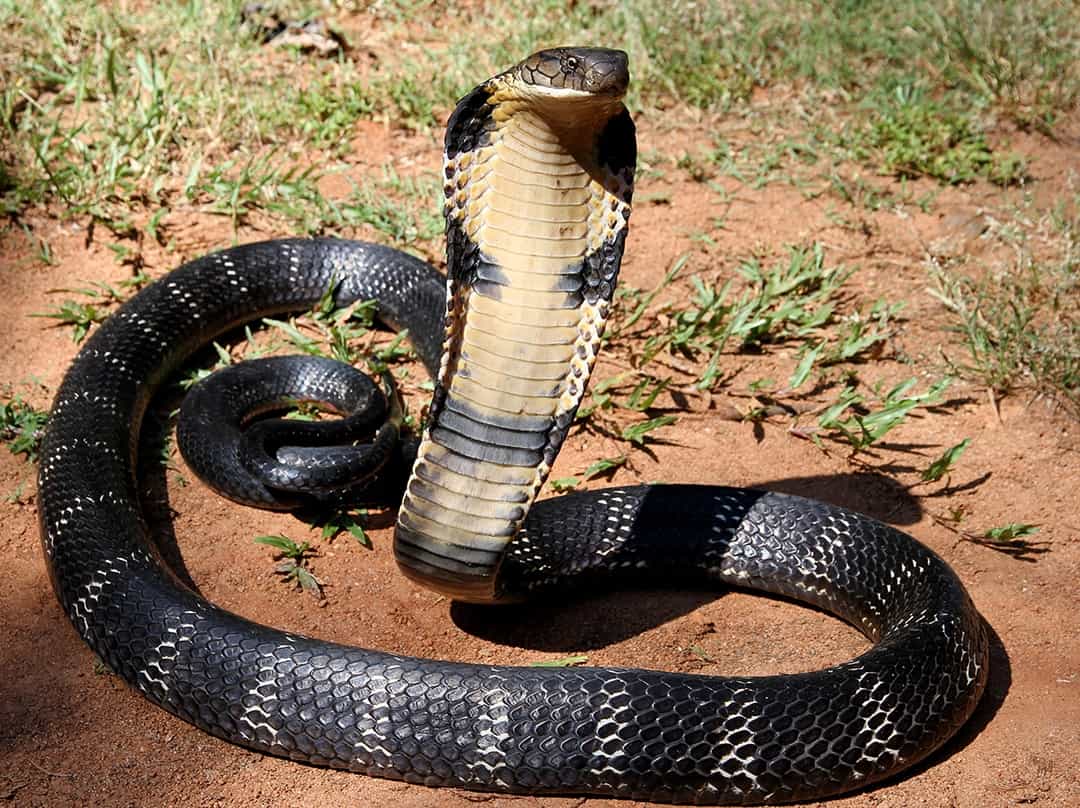
| Scientific Name | Ophiophagus hannah |
| Where It Lives | Southeast Asia, East Asia, South Asia |
| What It Eats | Other snakes, invertebrae |
| Conservation Status | Vulnerable (VU) according to the IUCN Red List |
Fun Fact: The amount of venom the king Cobra releases in a single bite is enough to kill 20 people.
King Cobras live in dense highlands, swamps, bamboo thickets, and agricultural land across Asia.
This reptile’s dark brown, green, and black scales blend with its surroundings. When they feel threatened by an animal or human, they expand their hood and raise the top half of their body off the ground. It is known as the longest venomous snake in the world.
8. King Crab
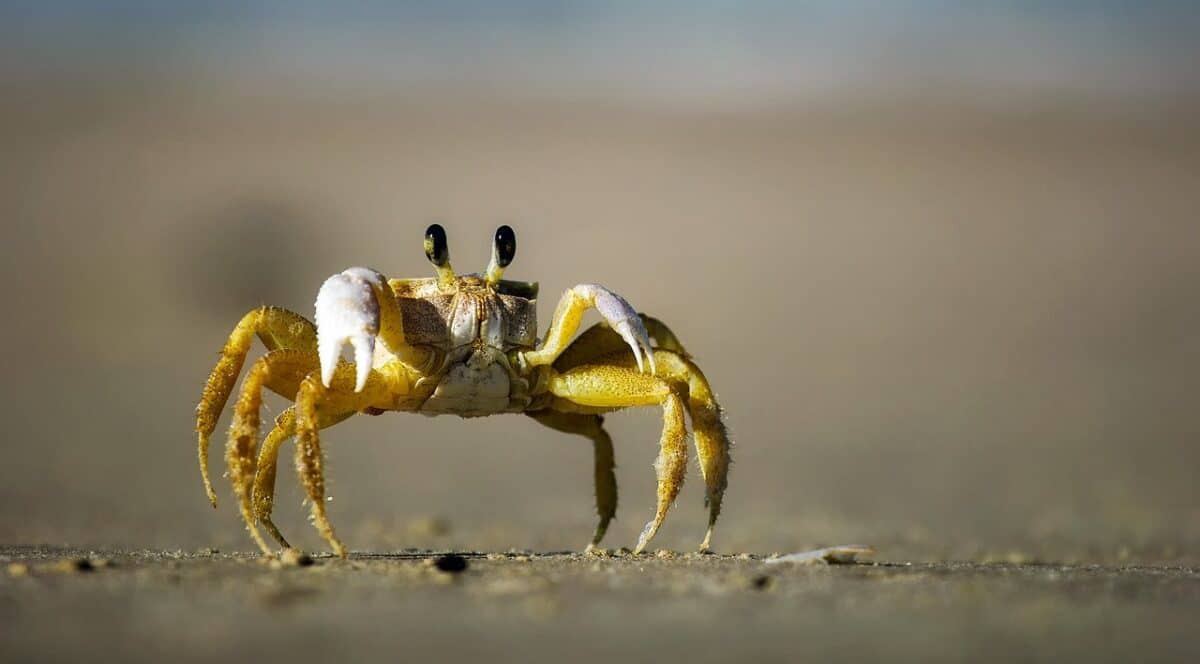
| Scientific Name | Paralithodes camtschaticus |
| Where It Lives | Southern Hemisphere |
| What It Eats | Mullosks, sea urchins, fish |
| Conservation Status | Near Threatened (NT) according to the IUCN Red List |
Fun Fact: King Crabs stack upon one another to seem more menacing when facing a threat. These stacks are called pods and can contain up to 100 crabs.
King Crabs have about 150 species in their family, and inhabit various depths of the oceans in the Southern Hemisphre.
These orange hued crabs have not only a shell for protection, but their entire body is also covered in spines! During their life they grow by means of a process called molting, where they shed their old shells and grow new, bigger ones.
9. King Penguin

| Scientific Name | Aptenodytes patagonicus |
| Where It Lives | Argentina, Chile, South Africa |
| What It Eats | Fish, crustaceans, krill |
| Conservation Status | Least Conern (LC) according to the IUCN Red List |
Fun Fact: King Harald V of Norway crowned one penguin at the Edinburgh Zoo a knight in 2008. His official name is Sir Nils Olav.
King Penguins live in rocky and temperate areas in Argentina, Chile, and South Africa.
These penguins are very social animals and gather in colonies. They even help each other keep warm during blizzards by cuddling up! They are the second-largest penguin species and are expert swimmers and divers – diving to great depths into the ocean.
10. Kingfisher
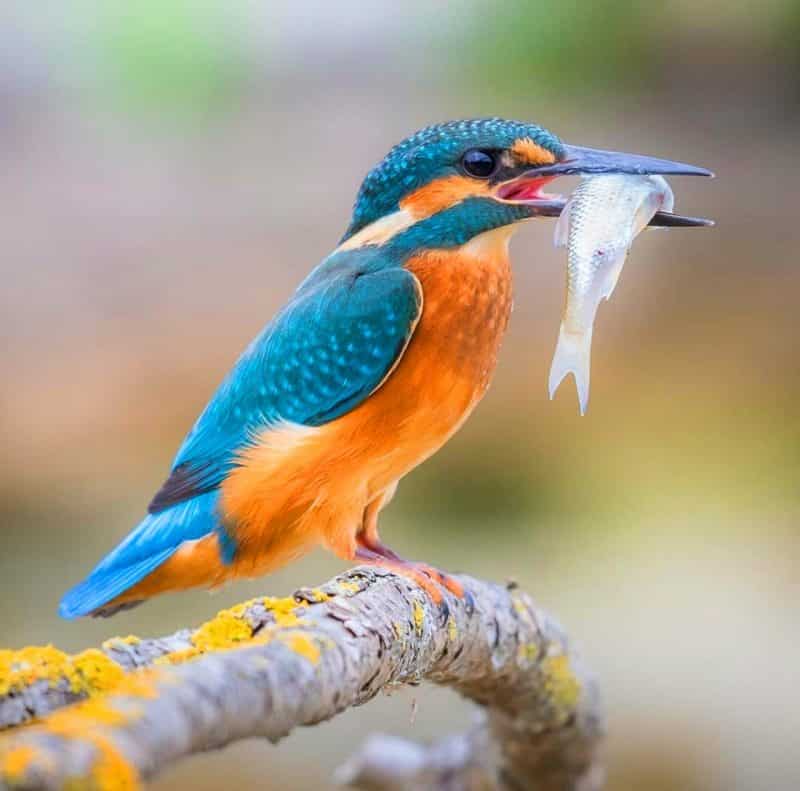
| Scientific Name | Alecindea |
| Where It Lives | Asia, Africa, Americas, Europe, Euroasia |
| What It Eats | Fish, shrimp, insects, tadpoles |
| Conservation Status | Near Threatened (NT) according to the IUCN Red List |
Fun Fact: The kingfisher’s eggs are almost pure white.
Kingfisher birds species are typically found near freshwater habitats in Africa, Asia, the Americas and Europe.
These small, brightly-colored birds with long, sharp, straight beaks do not solely feed on fish as their name might indicate. Not only are their wings strong, but their legs too! As they spend lots of time perched in trees close to water.
11. Kinkajou

| Scientific Name | Potos flavus |
| Where It Lives | Central America |
| What It Eats | Fruit, nectar, berries, leaves, insects, birds, eggs |
| Conservation Status | Least Concern (LC) according to the IUCN Red List |
Fun Fact: The kinkajou has a flexible spine that pivots a full 180 degrees from head to pelvis.
Kinkajous live in the canopies of various forests throughout Central America.
Their long prehensile tail acts as a third limb that can grip objects or branches, helping them navigate treetops. Their big round eyes can reflect light, which gives them a bright orange appearance. And the oldest kinkajou ever recorded had a lifespan of about 40 years.
12. Kit Fox
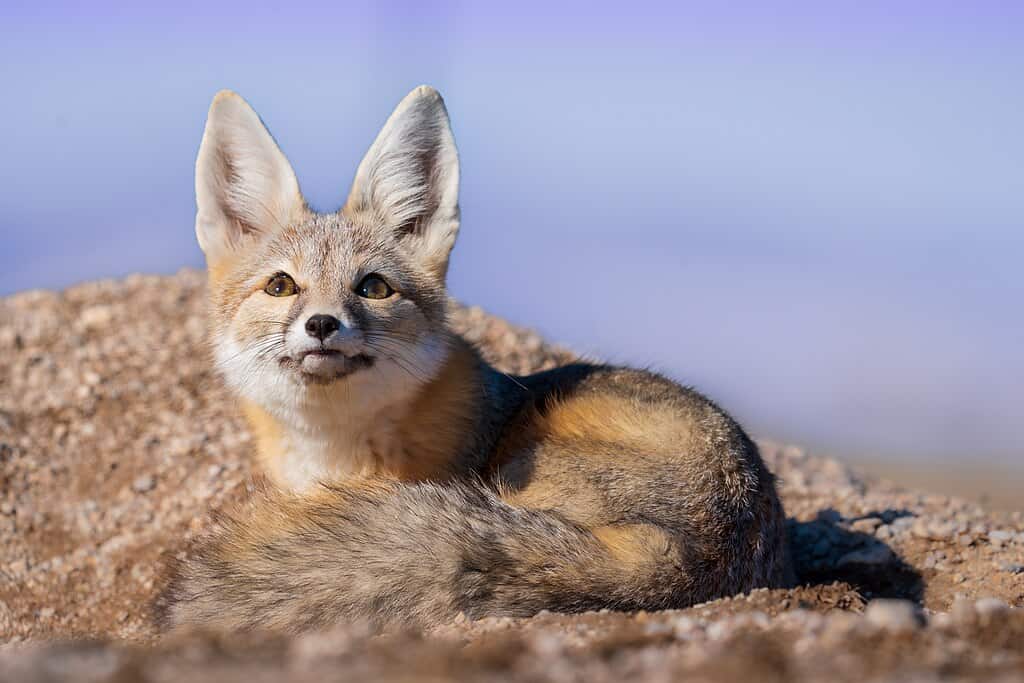
| Scientific Name | Vulpes macrotis |
| Where It Lives | North America |
| What It Eats | Small animals |
| Conservation Status | Least Concern (LC) according to the IUCN Red List |
Fun Fact: Kit Foxes are monogamous.
Kit Foxes, the smallest foxes in North America, live in arid and semi-arid regions across Mexico and the United States.
These small foxes mostly stay and rest in their dens during the day, and come out to hunt just after sunset. They are well adapted to their desert climates with their large ears helping to disperse heat from their bodies and aid in their exceptional sense of hearing.
13. Kiwi
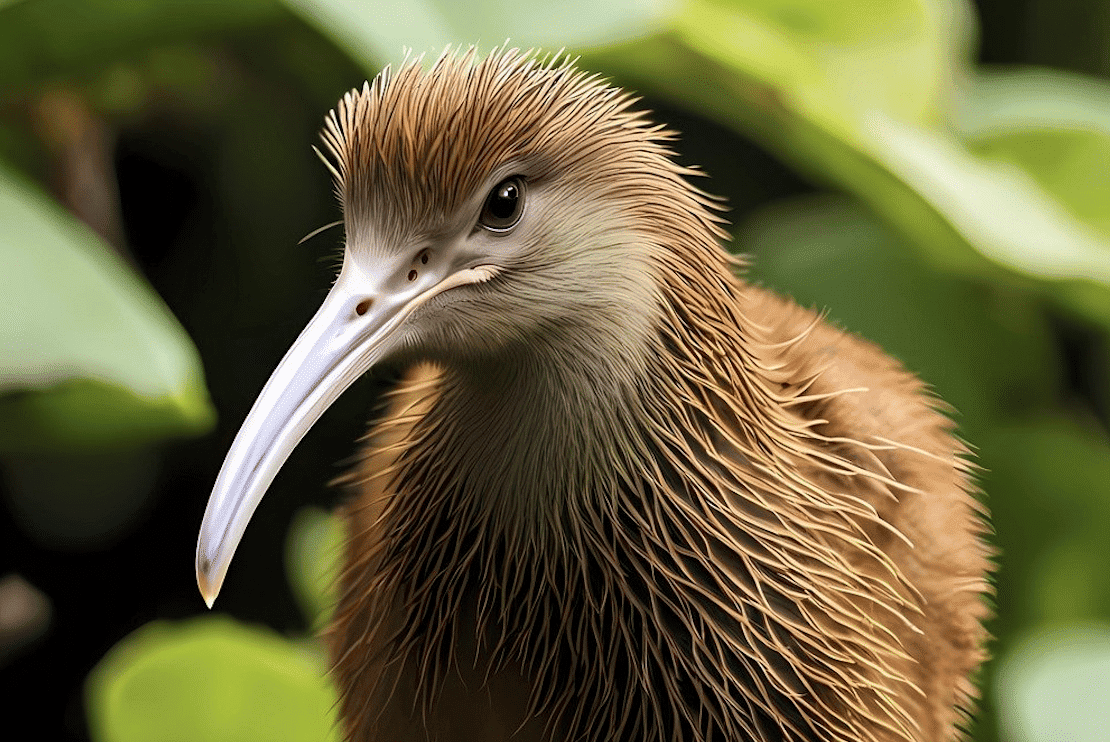
| Scientific Name | Apteryx |
| Where It Lives | Oceania |
| What It Eats | Worms, spiders, insects, fruit |
| Conservation Status | Near Threatened (NT) according to the IUCN Red List |
Fun Fact: The kiwi has a developed sense of smell that is uncommon among birds.
Kiwis live in forests and dense woodlands in their native country New Zealand/
These flightless birds are the national symbol of New Zealand, distinguished by their long, slender beaks and whisker-like feathers around their faces. Unlike other birds, they do not build nests but instead burrows in the ground with their claws.
14. Koala

| Scientific Name | Phascolarctos cinereus |
| Where It Lives | Australia |
| What It Eats | Eucalyptus leaves |
| Conservation Status | Vulnerable (VU) according to the IUCN Red List |
Fun Fact: Koalas have human-like fingerprints.
Koalas live in habitats ranging from woodlands to open forests and cooler and tropical climates in Australia.
The koala looks like a small bear with its large, broad face and round white-tufted ears. They live largely inactive lifestyles and can happily spend up to 18 hours a day sleeping or sitting in the trees to conserve energy.
15. Kodkod
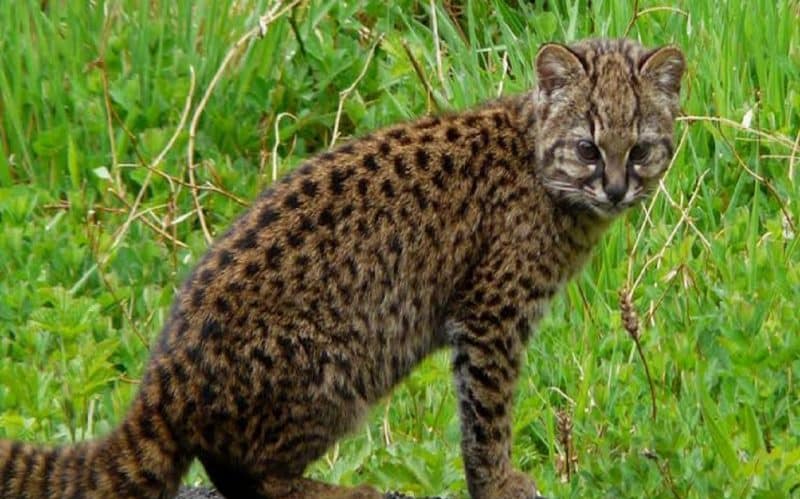
| Scientific Name | Leopardus guigna |
| Where It Lives | Argentina, Chile |
| What It Eats | Rodents, insects, reptiles, birds |
| Conservation Status | Vulnerable (VU) according to the IUCN Red List |
Fun Fact: The kodkod can live up to 11 years in the wild.
The Kodkod can only be seen in Argentina and Chile, where they live in forests in the coastal regions.
They are one of the smallest species of cats in the world and mostly live solitary and nocturnal lives. These wild cats spend most of their time in trees and are exceptional climbers, easily scaling trees with a 3 feet diameter.
16. Koi Fish

| Scientific Name | Cyprinus rubrofuscus “koi” |
| Where It Lives | Asia |
| What It Eats | Aquatic insects, larvae, crustaceans, fish |
| Conservation Status | Least Concern (LC) according to the IUCN Red List |
Fun Fact: The most expensive Koi Fish sold for 1.8 million dollars!
Koi fish live in coldwater lakes and ponds in Japan, but can also be found captive across the world.
Japanese rice farmers started breeding Koi for their beautiful colors in the 19th century. These brightly colored fish enjoy a long lifespan, with the oldest Koi fish living up to 226 years. Each of their colors also carry different symbolic meanings in some cultures.
17. Komodo Dragon
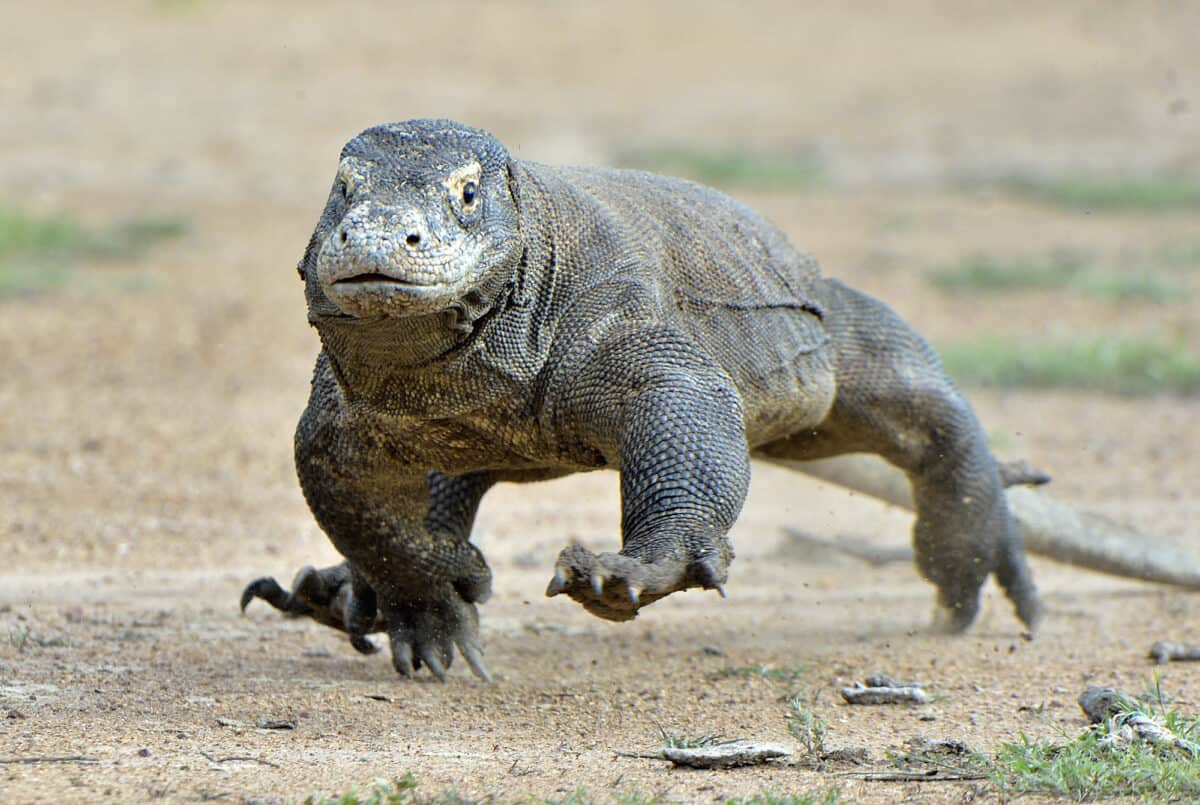
| Scientific Name | Varanus komodoensis |
| Where It Lives | Indonesia |
| What It Eats | Other reptiles, birds, eggs, small mammals |
| Conservation Status | Vulnerable (VU) according to the IUCN Red List |
Fun Fact: Komodo Dragons use their tails to fight and stand.
Komodo Dragons are enormous reptiles that live in open grasslands and tropical forests on the Indonesian Islands.
Not only are they the largest lizards in the world growing to 8 feet and 200 pounds, but they are also incredibly aggressive and dangerous. These solitary animals are mostly active during the day and will only gather in groups to mate and eat.
18. Kookaburra
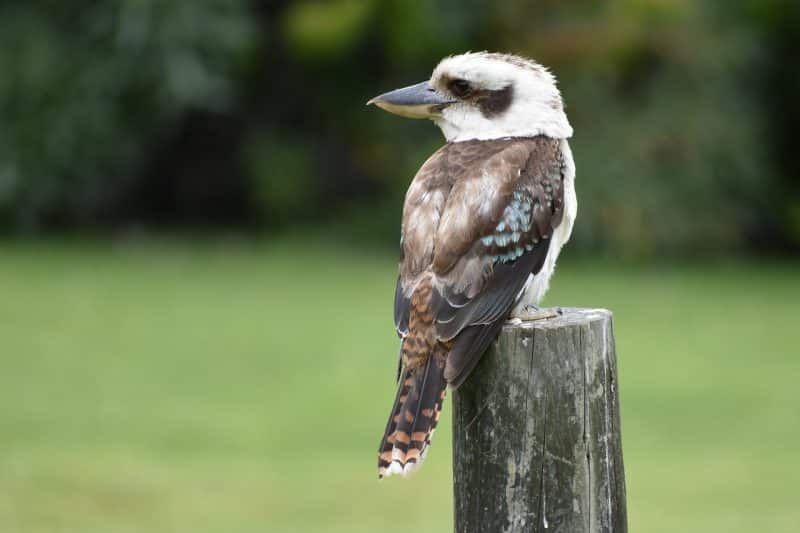
| Scientific Name | Dacelo |
| Where It Lives | Oceania |
| What It Eats | Insects, crustaceans, reptiles, birds, frogs |
| Conservation Status | Least Concern (LC) according to the IUCN Red List |
Fun Fact: Kookaburras commonly steal food from snakes.
The Kookaburra makes its home in forests and woodlands throughout Australia.
You can also call this bird the Bushman’s alarm clock, or the laughing kookaburra, because it lets out its call early in the morning that sounds like laughter. These birds are mostly active during the day and tend to sleep around 12 hours at night!
19. Krill

| Scientific Name | Euphausiacea |
| Where It Lives | Ocean |
| What It Eats | Plankton |
| Conservation Status | Not Evaluated (NE) according to the IUCN Red List |
Fun Fact: It is a popular seafood in Russia, Spain, Japan, and the Philippines.
Krill can be found in all the oceans of the world, where they live in coastal to deep waters.
These bioluminescent animals are one of the most important aquatic species in the marine ecosystem. They act as prey for many other animals and their waste plays a huge role in the earth’s carbon cycle. Their tiny transparent bodies glow and is covered with a hard protective shell.
20. Kudu

| Scientific Name | Tragelaphus strepsiceros |
| Where It Lives | Sub-Saharan Afica |
| What It Eats | Leaves, shoots, grass |
| Conservation Status | Least Concern (LC) according to the IUCN Red List |
Fun Fact: Male Kudus can grow horns as long as 6 feet.
Kudus are antelopes who live in woodland and bush areas in Eastern and South Africa.
Kudus are set apart from other antelopes by their massive spiral horns and striped coats. They tend to bushy areas that protect them from predators, luckily they also have incredible eyesight and hearing to pick up on approaching danger.
Summary of Animals that Start with K
Though not as numerous as some letters, the animals that start with ‘K’ range from the bouncing kangaroos of Australia to the colossal Komodo Dragons of Indonesia. We hope you enjoyed our list of animals that start with K. But before you leave, you would want to explore this list of animals that start with g.
See all A-Z Animals here:
- Animals That Start With A
- Animals That Start With B
- Animals That Start With C
- Animals That Start With D
- Animals That Start With E
- Animals That Start With F
- Animals That Start With G
- Animals That Start With H
- Animals That Start With I
- Animals That Start With J
- Animals That Start With L
- Animals That Start With M
- Animals That Start With N
- Animals That Start With O
- Animals That Start With P
- Animals That Start With Q
- Animals That Start With R
- Animals That Start With S
- Animals That Start With T
- Animals That Start With U
- Animals That Start With V
- Animals That Start With W
- Animals That Start With X
- Animals That Start With Y
- Animals That Start With Z
Join our Forum for free today!

- These are The 5 Largest Great White Sharks Ever Recorded - July 19, 2024
- The Surprising Benefits of Big Game Hunting - July 18, 2024
- $100k+ Hunting Experiences The Most Expensive Animals to Pursue - July 17, 2024

